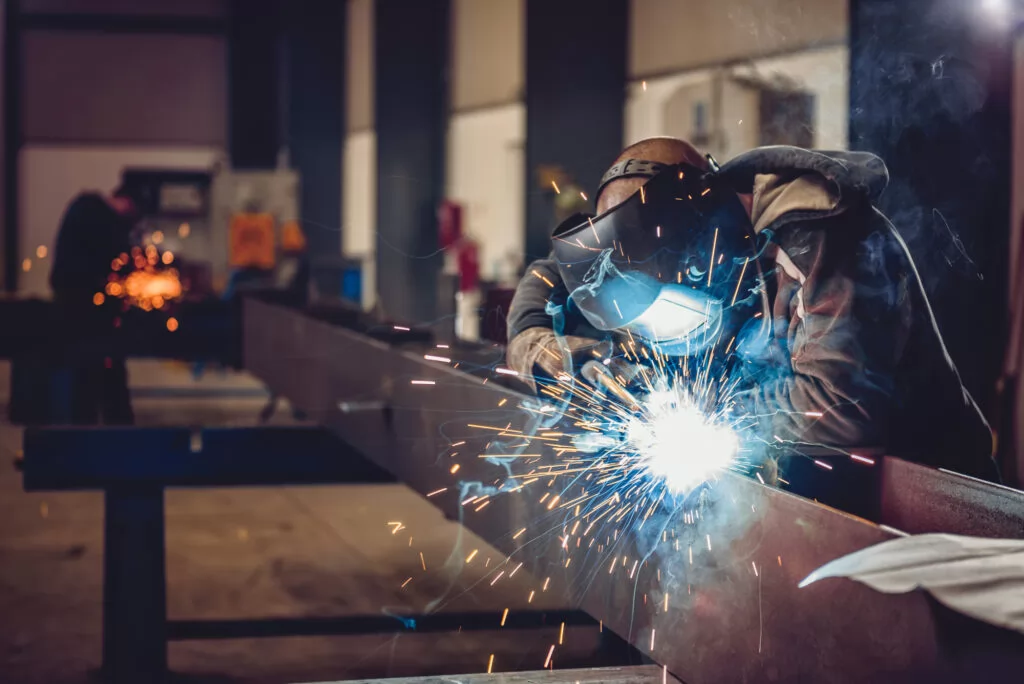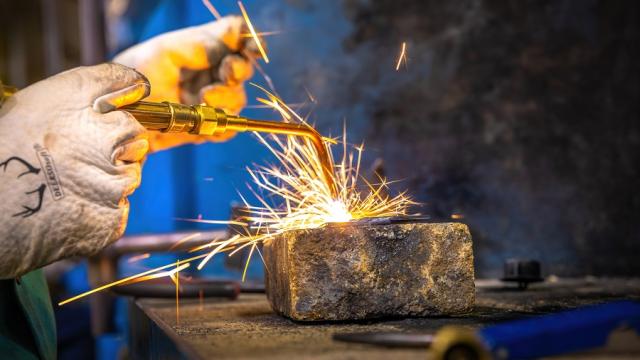Usual Welding Repair Issues and Just How to Address Them Efficiently
Welding fixings usually encounter a series of concerns that can endanger the stability of the end product. Usual problems consist of insufficient infiltration, porosity, and imbalance, among others. Each problem offers distinct obstacles that call for particular strategies for resolution. Recognizing these issues is important for welders aiming to boost their end results and skills. This discussion will certainly discover these typical welding repair problems and efficient techniques to address them.
Inadequate Infiltration
Insufficient penetration happens when the weld steel falls short to fully fuse with the base product, leading to weak joints and possible structural failings. This concern commonly comes from not enough heat input, inaccurate electrode angle, or inappropriate welding speed. Welders may come across insufficient penetration as a result of a miscalculation of the needed criteria for a specific product density or type. Furthermore, contamination on the base material's surface area can prevent reliable bonding, aggravating the trouble. To resolve inadequate penetration, welders need to assure appropriate settings on their tools and keep a clean work surface area. Normal evaluation of welds is advised to determine any kind of deficiencies early, permitting prompt improvements and the avoidance of compromised architectural honesty in bonded settings up.
Porosity
Porosity is a typical issue in bonded joints that manifests as tiny gas bubbles caught within the weld steel. This flaw can endanger the honesty of the weld, causing reduced stamina and prospective failure under anxiety. Belgrade Welding. Porosity generally arises from contamination, dampness, or incorrect welding techniques, which enable gases to get away right into the molten weld swimming pool. To attend to porosity, welders must ensure proper surface area preparation, keep a tidy workplace, and make use of ideal welding parameters. In addition, selecting the ideal filler material and protecting gas can reduce gas entrapment. Normal assessment and testing of welds can help recognize porosity early, guaranteeing prompt restorative activities are taken, thereby preserving the quality and reliability of the welded framework
Misalignment
Imbalance in welding can arise from different factors, including incorrect setup and thermal expansion. Recognizing the source is vital for reliable resolution. Numerous correction methods are offered to straighten elements and ensure structural honesty.
Root causes of Imbalance
Welding misalignment frequently comes from a range of underlying concerns that can endanger architectural stability. One main reason is inappropriate fit-up of parts prior to welding, which can result in voids and unequal surface areas. Variations in thermal expansion throughout the welding procedure can additionally lead to distortion, especially if the materials being joined have various coefficients of growth. In addition, inadequate fixturing and securing may stop working to hold parts firmly in location, leading to motion throughout welding. Improperly conserved equipment, consisting of welding devices and devices, may present inconsistencies in the weld bead, additional adding to imbalance. Finally, driver mistake, stemming from inadequate training or experience, can additionally play a significant function in developing misaligned welds.
Modification Techniques Available
Resolving imbalance effectively needs a combination of restorative techniques tailored to the details concerns available. One typical method is the use of jigs or components to hold components in the correct placement throughout welding, ensuring regular positioning. Furthermore, pre-heating the materials can help in reducing distortion and improve fit-up. For significant misalignment, mechanical adjustment methods, such as using hydraulic jacks or clamps, can be used to fix the position before welding. Post-weld heat treatment might additionally be needed to alleviate tensions triggered by misalignment. Lastly, careful inspection and modification during the setup phase can stop imbalance problems from becoming significant troubles, promoting a smoother welding procedure and improving total structural honesty.
Distortion
Distortion is an usual challenge in welding that can occur from various factors, including unequal heating & cooling. Comprehending the causes of distortion is necessary for executing effective prevention strategies. Resolving this concern not just improves structural honesty however also improves the overall quality of the weld.
Causes of Distortion
When subjected to the extreme heat of welding, materials commonly undergo modifications that can lead to distortion. This phenomenon largely arises from thermal development and tightening during the welding process. As the weld area warms up, the material expands; upon cooling, it contracts, which can develop interior stress and anxieties. On top of that, uneven heating across a work surface can worsen these stresses, leading to warping or bending. The sort of material likewise plays a substantial role; steels with differing thermal conductivity and coefficients of growth may respond differently, bring about unpredictable distortions. Inadequate joint layout and inadequate fixturing can contribute to misalignment throughout welding, increasing the likelihood of distortion. Recognizing these causes is necessary for efficient welding fixing and prevention methods.
Avoidance Techniques
Efficient prevention techniques for distortion during welding emphasis on managing warm input and making sure appropriate joint layout. Preserving a constant heat input aids to minimize thermal growth and contraction, which can result in distortion. Using strategies such as preheating the workpiece can also minimize the temperature level slope, advertising uniform heating. Additionally, picking proper joint styles, such as T-joints or lap joints, can enhance security and reduce tension concentrations. Executing correct fixturing to secure the workpieces in position even more help in maintaining positioning throughout the welding process. Staggered welding series can disperse warm a lot more uniformly, protecting against localized distortion. By applying these methods, welders can greatly lower the probability of distortion and enhance the general high quality of their welds.
Splitting
Splitting is a typical concern run into in welding repair services, often arising from numerous factors such as incorrect air conditioning prices, product option, or poor joint prep work. The occurrence of cracks can considerably endanger the integrity of the weld, causing prospective failures throughout operation. To resolve this problem, welders should initially assess the root causes, guaranteeing that materials work and appropriately picked for the specific application. Additionally, managing the cooling price throughout the welding procedure is vital; quick cooling can induce stress and anxiety and result in breaking. Appropriate joint design and preparation additionally add to minimizing the risk. Applying these methods can boost weld top quality and durability, inevitably minimizing the chance of cracking in completed weldments.

Incomplete Combination
A considerable concern in welding repair work is incomplete combination, which happens when the weld metal does not properly bond with the go to this website base material or previous weld passes - Montana Mobile Welding and Repair Belgrade. This issue can lead to weak points in the joint, possibly endangering the stability of the welded structure. Variables adding to insufficient combination include not enough warm input, improper welding method, and contamination of the surface areas being joined. To resolve this problem effectively, welders need to assure appropriate pre-weld cleansing and surface preparation, in addition to adjust their welding parameters to achieve sufficient penetration and blend. Routine examination during the welding procedure can likewise aid recognize insufficient blend early, enabling prompt rehabilitative measures to improve the general top quality of the weld
Overheating
While welding repair services can enhance structural honesty, overheating offers a considerable difficulty that can result in material destruction. Extreme warmth throughout welding can modify the mechanical properties of metals, causing lowered strength, boosted brittleness, and warping. This phenomenon is particularly important in high-stress applications where structural dependability is paramount. Determining overheating can involve aesthetic evaluations for staining or distortion, in addition to keeping track of temperature throughout the welding procedure. To alleviate the threats related to getting too hot, welders must utilize ideal methods, such as controlling warm input, adjusting travel rate, and using ideal filler products. Additionally, applying pre- and post-weld warm treatments can help restore product homes and improve the overall quality of the repair, making certain long-lasting performance and safety.
Frequently Asked Questions
What Are the Usual Indications of a Welding Problem?

Exactly How Can I Evaluate My Welds for Top quality?
To evaluate welds for quality, one can utilize visual inspections, ultrasonic testing, and radiographic techniques. Each technique guarantees structural honesty, determines issues, and confirms adherence to defined standards, ultimately enhancing the dependability of the welded joints.
What Security Precautions Should I Take While Welding?
When welding, one need to focus on safety by putting on ideal personal protective devices, ensuring appropriate ventilation, safeguarding flammable products away, maintaining a clean workspace, and understanding environments to stop crashes and injuries.
Can I Repair a Weld Without Redesigning the Entire Joint?
Fixing a weld without renovating the whole joint is possible, depending upon the damages (Belgrade Fabrication). Strategies such as grinding, adding filler material, or making use of a welding procedure can efficiently attend to particular flaws while protecting the surrounding structure
What Devices Are Vital for Efficient Welding Repair Works?
Essential devices for efficient welding repair work consist of a welding equipment, cable brush, grinder, protective gear, clamps, and filler materials. Each device plays an important role in guaranteeing quality and security throughout the repair service process. Porosity normally emerges from contamination, dampness, or improper welding methods, which enable gases to run away into the liquified weld pool. Poorly maintained tools, including welding machines and tools, may present incongruities in the weld grain, additional contributing to imbalance. When subjected to the intense warmth of welding, products usually go through changes that can lead to distortion. Breaking is a typical issue experienced in welding repair services, frequently resulting from different aspects find more info such as inappropriate cooling internet prices, product selection, or insufficient joint prep work. A substantial concern in welding fixings is insufficient fusion, which takes place when the weld metal does not properly bond with the base product or previous weld passes.